DNA microarray gene expression profile of marginal zone versus follicular B cells and idiotype positive marginal zone B cells before and after immunization with Streptococcus pneumoniae
- PMID: 18453586
- PMCID: PMC3966313
- DOI: 10.4049/jimmunol.180.10.6663
DNA microarray gene expression profile of marginal zone versus follicular B cells and idiotype positive marginal zone B cells before and after immunization with Streptococcus pneumoniae
Abstract
Marginal zone (MZ) B cells play an important role in the clearance of blood-borne bacterial infections via rapid T-independent IgM responses. We have previously demonstrated that MZ B cells respond rapidly and robustly to bacterial particulates. To determine the MZ-specific genes that are expressed to allow for this response, MZ and follicular (FO) B cells were sort purified and analyzed via DNA microarray analysis. We identified 181 genes that were significantly different between the two B cell populations. Ninety-nine genes were more highly expressed in MZ B cells while 82 genes were more highly expressed in FO B cells. To further understand the molecular mechanisms by which MZ B cells respond so rapidly to bacterial challenge, Id-positive and -negative MZ B cells were sort purified before (0 h) or after (1 h) i.v. immunization with heat-killed Streptococcus pneumoniae, R36A, and analyzed via DNA microarray analysis. We identified genes specifically up-regulated or down-regulated at 1 h following immunization in the Id-positive MZ B cells. These results give insight into the gene expression pattern in resting MZ vs FO B cells and the specific regulation of gene expression in Ag-specific MZ B cells following interaction with Ag.
Figures
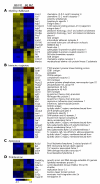
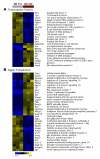
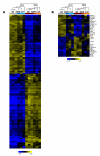

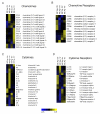
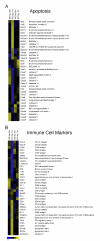
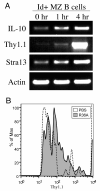
Similar articles
-
Marginal zone precursor B cells as cellular agents for type I IFN-promoted antigen transport in autoimmunity.J Immunol. 2010 Jan 1;184(1):442-51. doi: 10.4049/jimmunol.0900870. Epub 2009 Nov 30. J Immunol. 2010. PMID: 19949066 Free PMC article.
-
Rapid response of marginal zone B cells to viral particles.J Immunol. 2004 Oct 1;173(7):4308-16. doi: 10.4049/jimmunol.173.7.4308. J Immunol. 2004. PMID: 15383559
-
Identification of CD36 as a new surface marker of marginal zone B cells by transcriptomic analysis.Mol Immunol. 2007 Jan;44(4):332-7. doi: 10.1016/j.molimm.2006.02.030. Epub 2006 Apr 17. Mol Immunol. 2007. PMID: 16616782
-
The splenic marginal zone in humans and rodents: an enigmatic compartment and its inhabitants.Histochem Cell Biol. 2006 Dec;126(6):641-8. doi: 10.1007/s00418-006-0210-5. Epub 2006 Jul 1. Histochem Cell Biol. 2006. PMID: 16816939 Review.
-
Immune regulation by Fcα/μ receptor (CD351) on marginal zone B cells and follicular dendritic cells.Immunol Rev. 2015 Nov;268(1):288-95. doi: 10.1111/imr.12345. Immunol Rev. 2015. PMID: 26497528 Review.
Cited by
-
IRF4 controls the positioning of mature B cells in the lymphoid microenvironments by regulating NOTCH2 expression and activity.J Exp Med. 2013 Dec 16;210(13):2887-902. doi: 10.1084/jem.20131026. Epub 2013 Dec 9. J Exp Med. 2013. PMID: 24323359 Free PMC article.
-
mTORC1 coordinates an immediate unfolded protein response-related transcriptome in activated B cells preceding antibody secretion.Nat Commun. 2020 Feb 5;11(1):723. doi: 10.1038/s41467-019-14032-1. Nat Commun. 2020. PMID: 32024827 Free PMC article.
-
CK2β-regulated signaling controls B cell differentiation and function.Front Immunol. 2023 Jan 11;13:959138. doi: 10.3389/fimmu.2022.959138. eCollection 2022. Front Immunol. 2023. PMID: 36713383 Free PMC article.
-
Myocardial B cells are a subset of circulating lymphocytes with delayed transit through the heart.JCI Insight. 2020 Feb 13;5(3):e134700. doi: 10.1172/jci.insight.134700. JCI Insight. 2020. PMID: 31945014 Free PMC article.
-
Immune regulation by atypical chemokine receptors.Nat Rev Immunol. 2013 Nov;13(11):815-29. doi: 10.1038/nri3544. Nat Rev Immunol. 2013. PMID: 24319779 Review.
References
-
- Martin F, Kearney JF. Marginal-zone B cells. Nat Rev Immunol. 2002;2:323–335. - PubMed
-
- Dammers PM, Visser A, Popa ER, Nieuwenhuis P, Kroese FG. Most marginal zone B cells in rat express germline encoded Ig VH genes and are ligand selected. J Immunol. 2000;165:6156–6169. - PubMed
-
- Bendelac A, Bonneville M, Kearney JF. Autoreactivity by design: innate B and T lymphocytes. Nat Rev Immunol. 2001;1:177–186. - PubMed
-
- Kearney JF. Innate-like B cells. Springer Semin Immunopathol. 2005;26:377–383. - PubMed
-
- Oliver AM, Martin F, Gartland GL, Carter RH, Kearney JF. Marginal zone B cells exhibit unique activation, proliferative and immunoglobulin secretory responses. Eur J Immunol. 1997;27:2366–2374. - PubMed
Publication types
MeSH terms
Substances
Grants and funding
LinkOut - more resources
Full Text Sources
Medical

